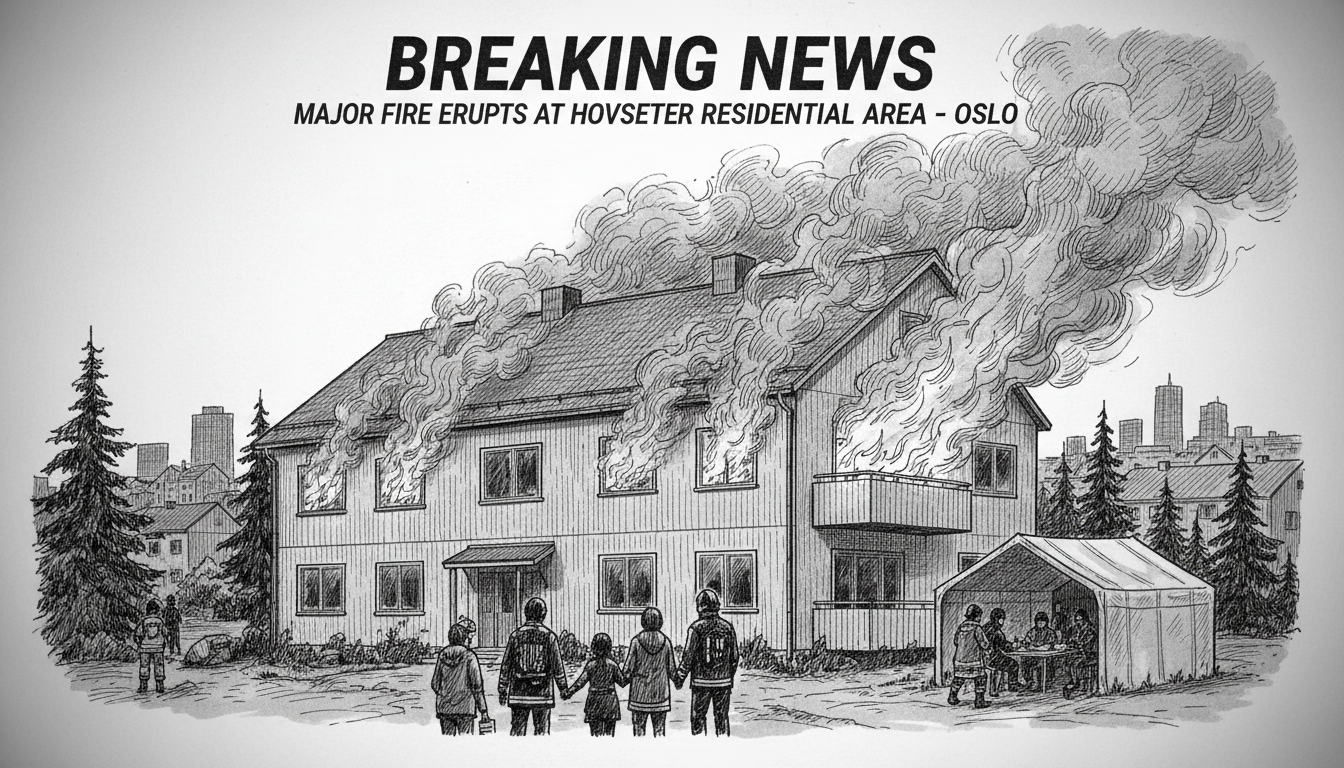A serious fire has engulfed a residential building in Oslo's Hovseter neighborhood. Flames completely consumed the second floor of the structure. Thick black smoke poured from the property, creating visible plumes across the area.
Emergency officials immediately issued safety recommendations for local residents. They advised neighbors and nearby businesses to close windows and shut down ventilation systems. These precautions aimed to prevent smoke inhalation and potential health hazards.
Operations manager Gabriel Langfeldt confirmed the situation in official communications. He stated the fire showed no signs of spreading to adjacent buildings. This assessment provided relief to concerned residents in the surrounding community.
Authorities successfully evacuated all occupants from the affected building. Emergency medical services examined the evacuated individuals. All residents appeared unharmed but received standard medical checks as a precaution.
Oslo fire department crews responded quickly to the emergency call. Their prompt action likely prevented more extensive damage. Firefighters worked to contain the blaze and protect nearby structures.
Why do fires in Nordic residential areas demand such careful response? Norway's building codes emphasize fire safety, but older structures sometimes present challenges. The country's cold climate means residents keep windows closed and heating systems running, potentially complicating ventilation during fire incidents.
This Hovseter incident follows a pattern seen in other Nordic urban areas. Dense residential neighborhoods require coordinated emergency responses. Oslo's emergency services maintain strong preparedness for such events, reflecting Norway's comprehensive public safety approach.
International residents in Oslo should note Norway's emergency protocols. The country uses a unified emergency number (113) that connects callers to police, fire, and medical services. Expat communities often benefit from reviewing local safety procedures, particularly in residential buildings.
What happens next for affected residents? Norwegian insurance systems typically provide temporary accommodation during such disruptions. The municipality's social services may offer additional support to displaced families. Building inspectors will assess structural damage once the fire is fully extinguished.
Norway's response systems demonstrate the country's investment in public safety infrastructure. The coordinated effort between fire services, medical teams, and police reflects Nordic emergency management standards. Such incidents, while disruptive, test and validate these comprehensive safety networks.

